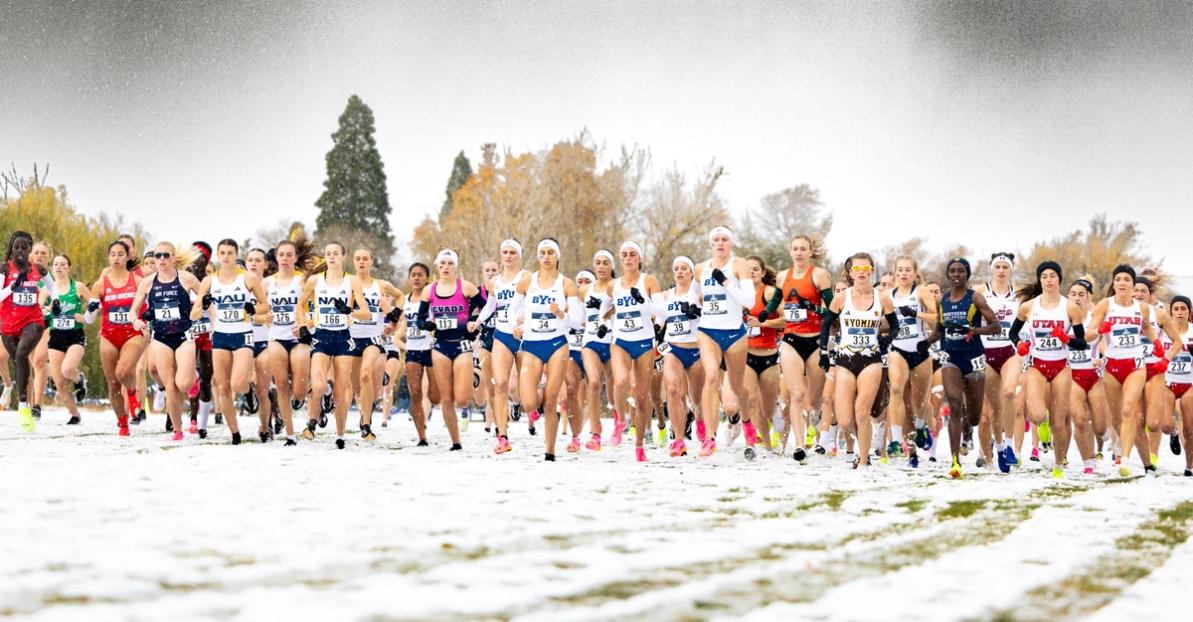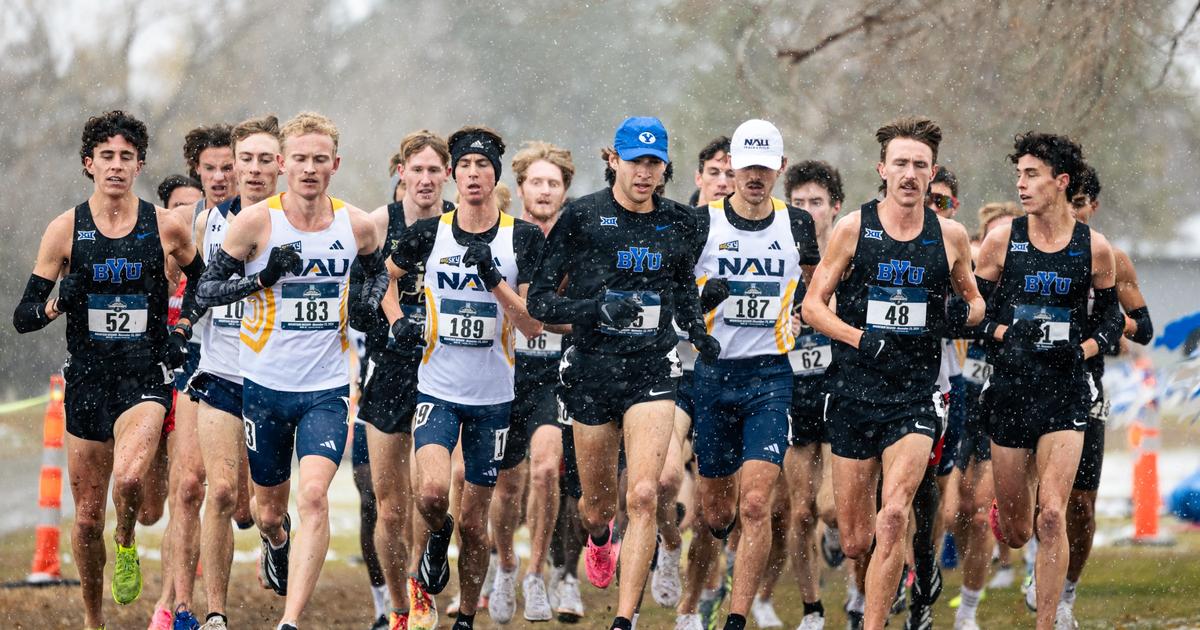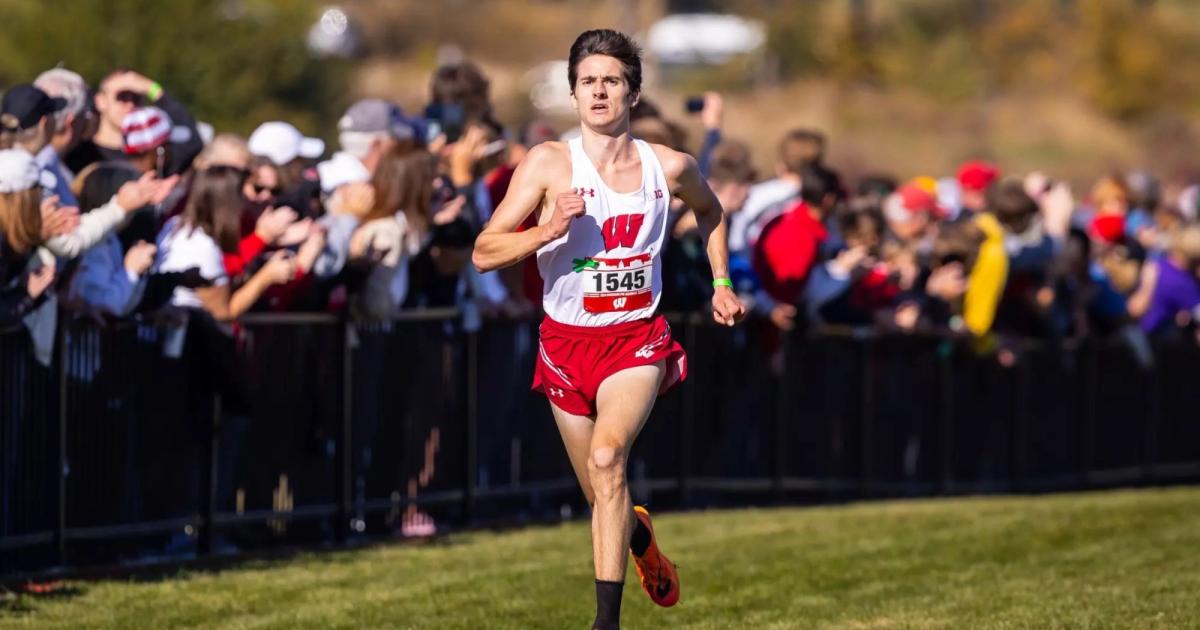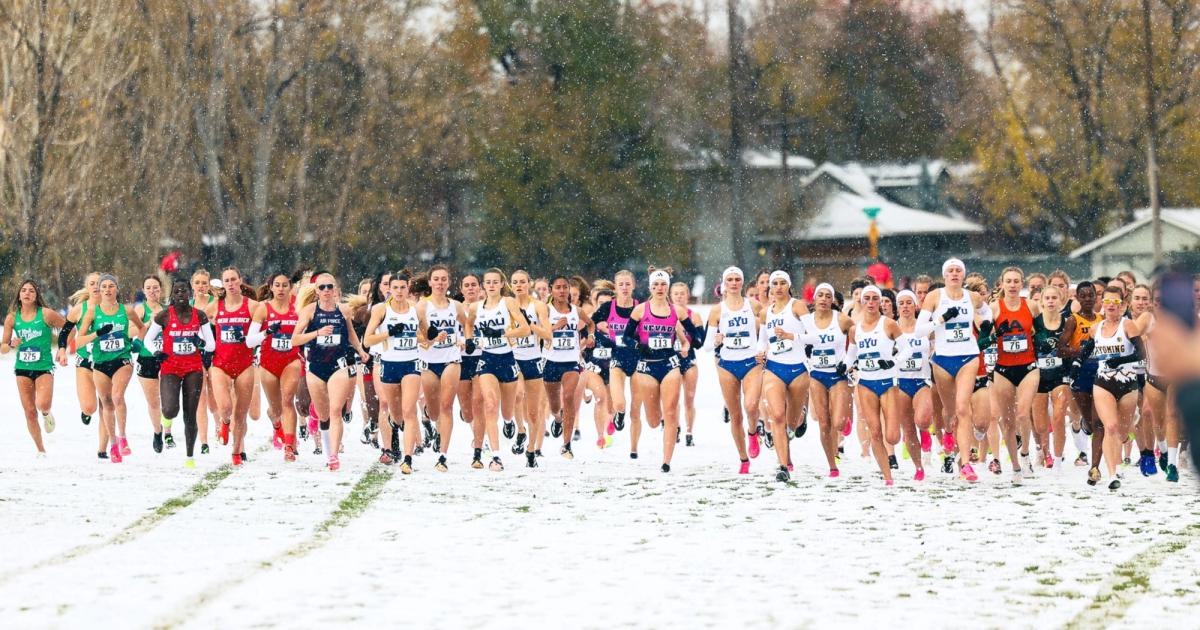By Audrey Allen
November 20, 2024
___________________
This year, the Big Dance is going down in the heart of Big Ten Country: Madison, Wisconsin. And if the promise of Spotted Cow and the possibility of a snowy race course aren’t enough to get you excited, the battle royale between home-grown Olympians, 28-year-old freshmen, and everyone in between will certainly be a tango for the ages.
Whether or not meet organizers will regret their decision to not cap spectators at the Zimmer Cross Country Course remains to be seen, but the excitement around the nation can’t be cooled down by a forecasted local high of 39°F. Particularly if you’re watching from the couch Saturday morning, the chance to follow the whole meet for 2.5 hours straight on TV via ESPNU isn’t something we can take for granted…
This year has a lot to live up to. The last time NCAAs were held in Madison, back in 2018, home field advantage helped Wisconsin senior Morgan McDonald edge out Stanford’s Grant Fisher for the men’s title. Mike Smith added a major bullet point to his resume and some significant hardware to the ol’ trophy case with NAU’s second consecutive team title. Notable top dogs on that snowy day included eventual Paris Olympians Conner Mantz and Clayton Young, eventual podcast co-hosts Olli Hoare and Geordie Beamish, and future OAC teammates Joe Klecker and Yared Nuguse, to name a few. On the women’s side, Dani Jones’s individual title led Colorado to the team crown over eventual Paris Olympians Weini Kelati, Jessica Hull, Elise Cranny, Fiona O’Keeffe, Courtney Wayment, Val Constien, Sharon Lokedi, and Susan Ejore-Sanders. No small feat!
Six years later, the course is once again slated to be trampled on by two stacked fields and we’re anticipating the sort of racing that almost gives one a sense of nostalgia before anything’s even happened.
And a lot of that starts with the Mountain Region’s batch of qualifiers. Some of our hypotheticals from last week came to fruition as indeed six men’s teams qualified out of that corner of the country, with small surprises from Utah State and Colorado clinching qualifying spots when it mattered most. But with 25 other teams in the mix, all eyes will be on the firepower up front.
BYU and NAU both enter with their sights set on picking up another team trophy. But with teams as talented as regional rivals New Mexico and podium favorites Oklahoma State, Iowa State, and Arkansas – not to mention the front-running tendencies of Texas Tech duo of Solomon Kipchoge and Ernest Cheruiyot and WSU’s Evans Kurui – things may get out hot early, testing the patience and late-race mettle of the deeper teams’ 3-4-5 runners. The Cougars and Lumberjacks may end up slugging it out largely off-camera, as their recent success tends to come from huge point swings deep in the pack in the final kilometers.
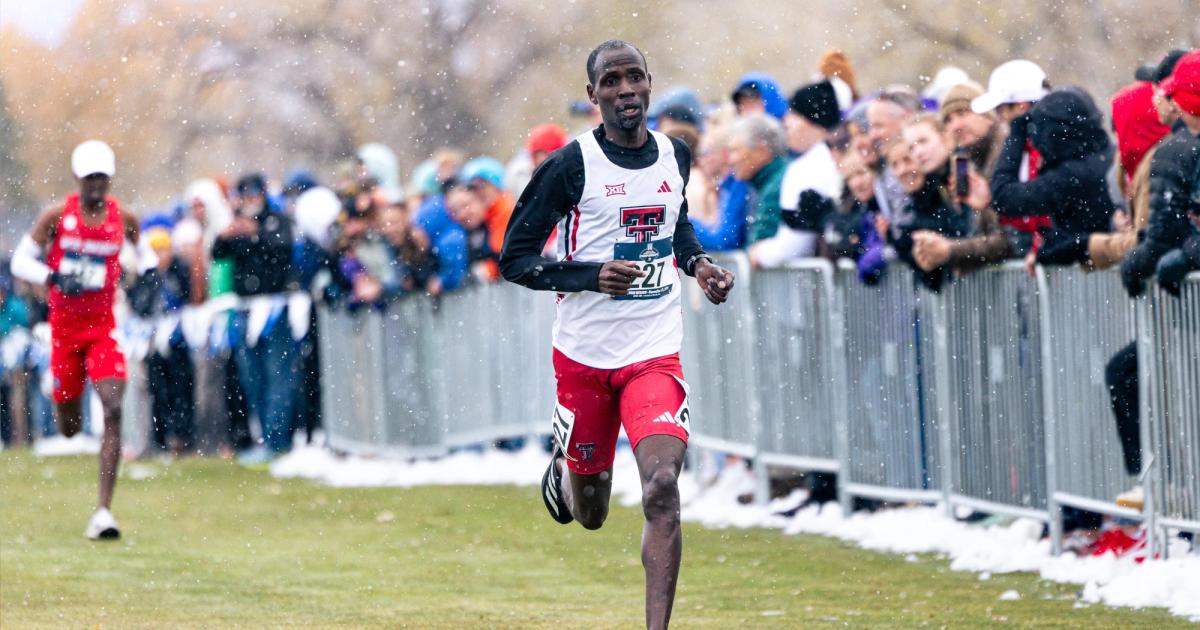
Noah Hales / @noahhhales
Nerd alert: Stats obsessives might want to keep tabs on where Lars Mitchel of Colorado State ultimately places. The lowest-placing individual qualifier to make NCAAs, he finished 18th in the Mountain race – a positive spin to racing in a region sending 40+ runners in teams spots. How close can he come to an All-American performance one week later?
However, in a small rebuttal to altitude-training diehards, the Southeast region also got six men’s teams into the Big Dance. Among this sextet, Virginia Tech proved to be a true dark horse. The Hokies had not been ranked, or even received votes for that matter, the entire season. It’s probably fair to call this entire region underdogs. Wake Forest, the top dog in the area for much of the fall, looks to be limping into Saturday with some question marks around its runners’ health. But don’t count out a team like UNC, led by two low sticks still rounding into form.
Another fun, dorky exercise: Score the race as if it were a dual meet between the Mountain and Southeast regions.
For the women, the story is very similar. Team title favorites BYU come in ranked number one, and the three other Mountain squads that qualified, NAU, Utah, and New Mexico, all arrive in Wisconsin ranked in the top 10. Between the influx of oxygen they’ll experience coming down from altitude and the fact that some of the other contending teams – Washington, Oregon, and Providence, for instance – are relying heavily on 1500m specialists, it may prove advantageous for the Mountain squads to push a hot early early pace, rather than leave things to a fast close.
The South region showed the most depth with five teams making it on following the at-large selections. Few of these teams are likely to threaten the Mountain favorites’ battle for the title, but discount a team like Alabama – with its multiple low scorers – at your own risk. Similarly, a squad like Florida that received a good deal of pre-season attention is worth keeping tabs on as the race progresses. Hilda Olemomoi has as good a shot at the win as anybody, it never hurts to basically only have to score four runners, and all it takes is for one or two other runners to have a banner day.
The way a team performs at Regionals isn’t necessarily indicative of how they’ll perform at Nationals. A team good enough to auto-qualify while, for lack of a better phrase, farting around, will look very different on Saturday. Look at the hometown team for example. Wisconsin got second in the Great Lakes meet by employing the oldest “we’re not really trying” trick in the book: running the whole damn race as a five-man pack. Untethered from this sort of strategic approach to racing this weekend, who’s to say how the Badgers and any other teams that kept something in reserve will fare?
The best part of cross country is that the best storylines that come out of championships tend to be the ones that nobody even bothered to put in the newsletter beforehand. Last weekend is a great example. At first, it seemed like Douglas Buckeridge’s premature celebration at the front of the Great Lakes race would simply be a silly viral moment, as the Purdue Boilermaker let Butler’s William Zegarski slip past his outstretched arms to take the regional win. But that one-place swing – from 2 to 1 – lowered Butler’s team score to 104, tying Michigan State. Butler won the tiebreaker and the men get to go to Wisconsin. But the butterfly effect of the Spartans’ fourth-place bump meant that the Spartans are staying home and Tulsa, the 36th-ranked team in an entirely different region, qualified instead with an at-large bid.
The lesson here? Well, for starters, run hard through the line. But more importantly, team outcomes in cross-country are famously unpredictable and, with no heavy favorite, the title could come down to one runner finishing somewhere in the mid-40s. What a sport!
For even more NCAA XC coverage, check out Owen Corbett’s detailed preview on the CITIUS MAG site.
___________________
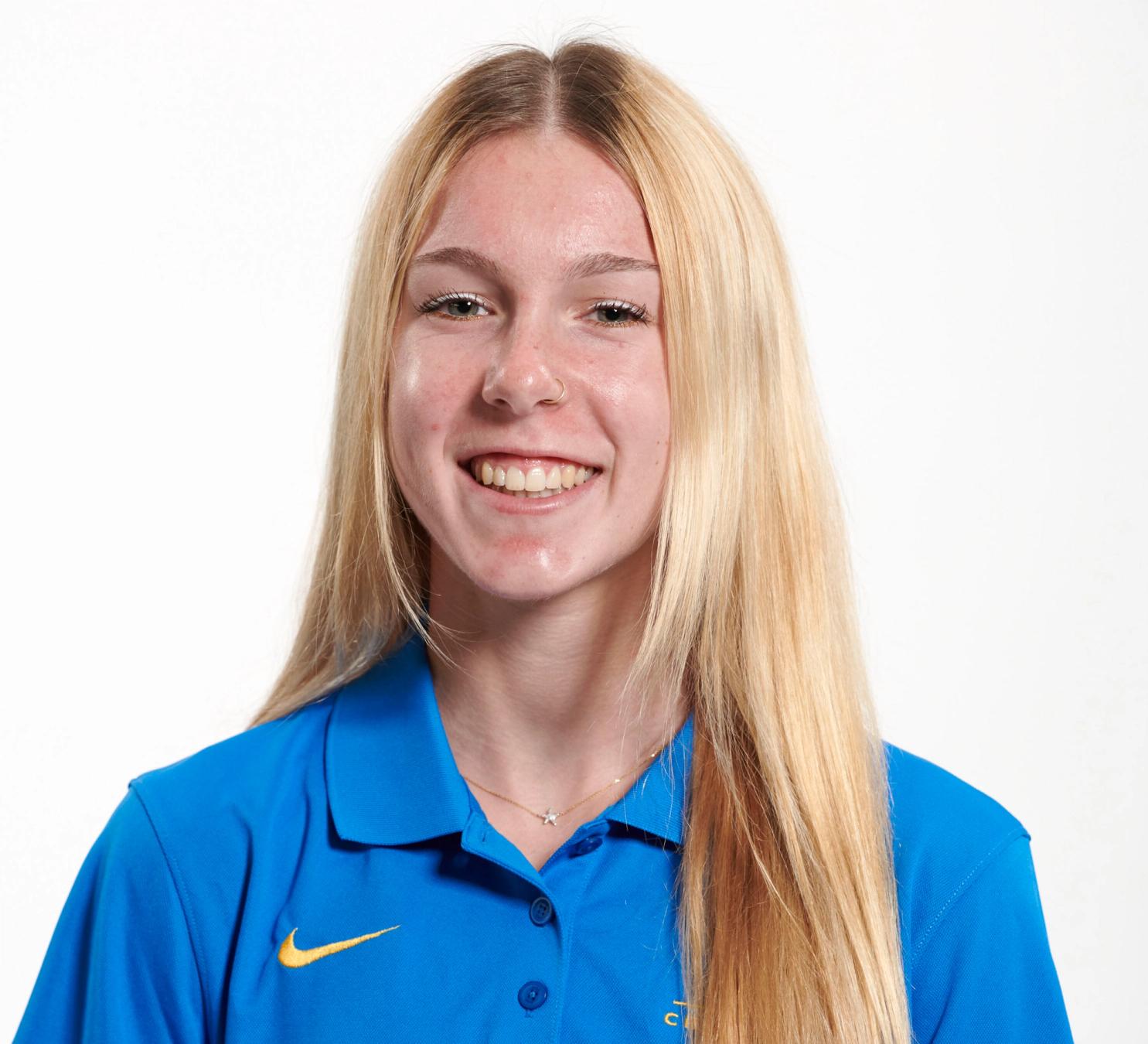
Audrey Allen
Audrey is a student-athlete at UCLA (Go Bruins!) studying Communications with minors in Professional Writing and Entrepreneurship. When she’s not spiking up for cross country and track, she loves being involved with the media side of the sport. You’ll often find her taking photos from the sidelines or designing graphics on her laptop.
